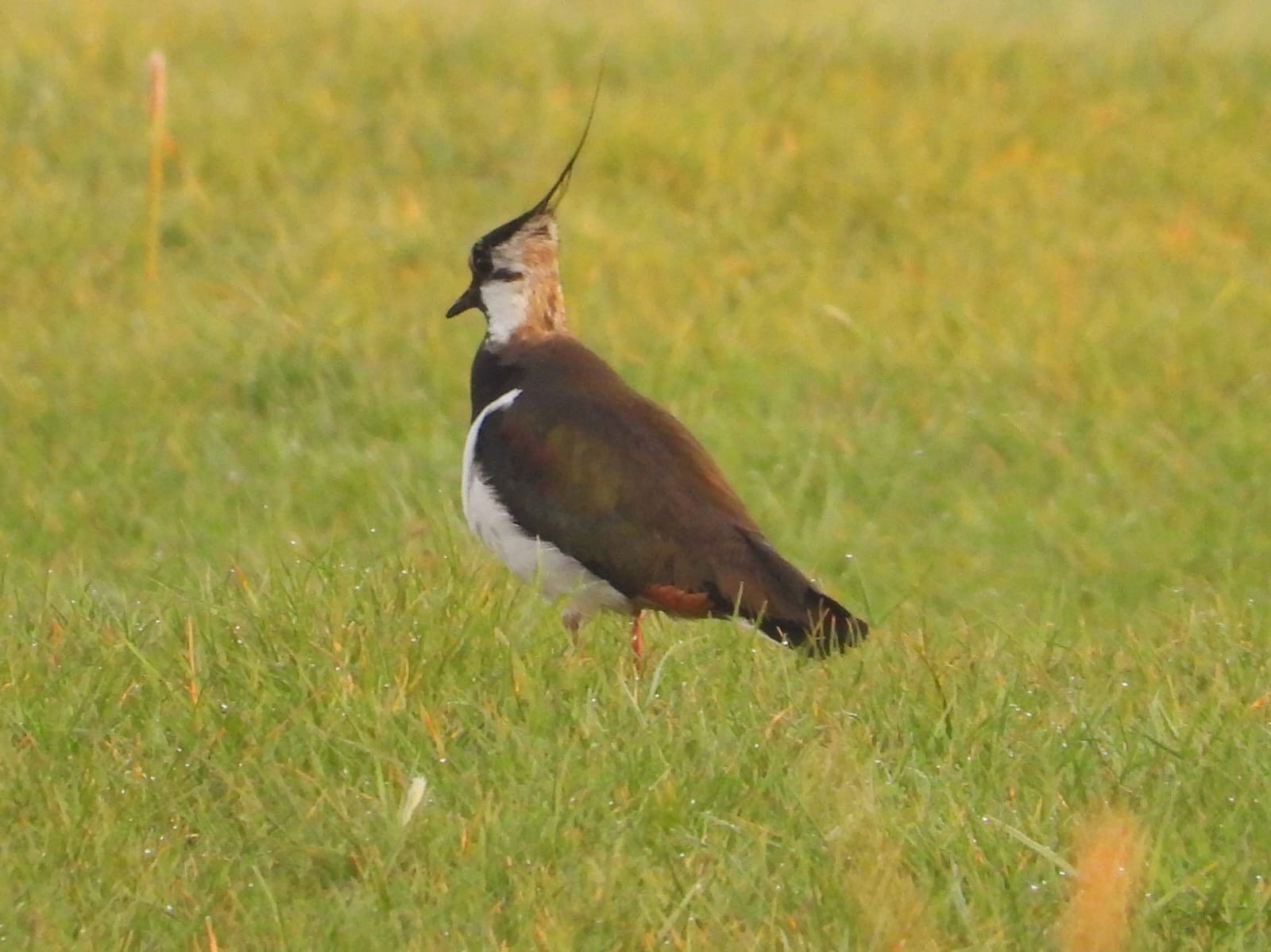Lapwing breed on the Elmore Estate

Just two years after digging the scrapes on the Rewild project land at Elmore Court, we are excited to announce that lapwings have not only nested, but we have now seen two families of lapwing raising their chicks, meaning they have bred successfully!
Two years ago, Elmore Court opened six luxury treehouses, overlooking a meadow, part of the rewilding project on the Elmore Court Estate. In the meadows a series of shallow ponds called scrapes and ditches were dug, to create suitable habitat for wading wetland birds. This type of wetland habitat has reduced significantly over decades and caused a crisis for certain species such as the lapwing, who without the favoured habitat had reduced in great numbers in the UK, putting them on the 'red list'*, a species causing concern.
Lapwings are a handsome, regal-looking plover with glossy, iridescent dark green and purple plumage, white bellies, and a long, wispy crest atop their heads. Their flight is not discrete, but brash, tumbling, and ostentatious. Many people associate the sound of the lapwing in flight, with the beginning of spring. Throughout the UK the lapwing has many different nicknames, depending on local dialects, such as peewit, chewit, teeack, peasiewheep and pyewipe.
The lapwings’ main diet is earthworms, cranefly larvae and insects. They feed where they can find lots of these, such as pasture. Wet grassland makes a particularly positive source of food for lapwings - unfortunately for the British lapwing population, wetlands have been drained for centuries to make way for agriculture, leading to loss of feeding and nesting ground for our crested friends. The way we farm and manage land has also changed over generations, disturbing nesting habitats. Additionally, the nesting ground of the lapwing has consistently shifted towards the east of Britain over the past few decades, perhaps due to milder winters, and lapwings are also taking to tidal, coastal mudflats in search of food, in place of their preferred grazing wetland habitat.
Any new life on the land is exciting, but these factors are why we are especially delighted to have nesting lapwings' here at Elmore.
Our restoration of wet grassland by breaking up the agricultural land drains and our creation of the scrapes have provided further ideal habitat for the lapwing and many other species of bird. Our healthy, pesticide free soil means there is an abundance of earthworms and larvae to feed the birds, and later in the year our wildflower meadows provide food and habitat for plenty of insects.
We are proud and pleased that after just two years they have chosen the Elmore Estate to nest and raise their young. We can't wait to see what other species will find their here, but for now, these chicks are an excellent mark of the success of our Rewilding project.
*A red list designation means that a species is either threatened with extinction or has had a significant decline in numbers.



